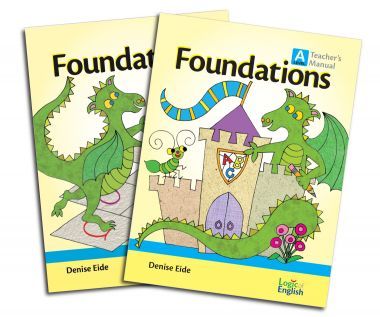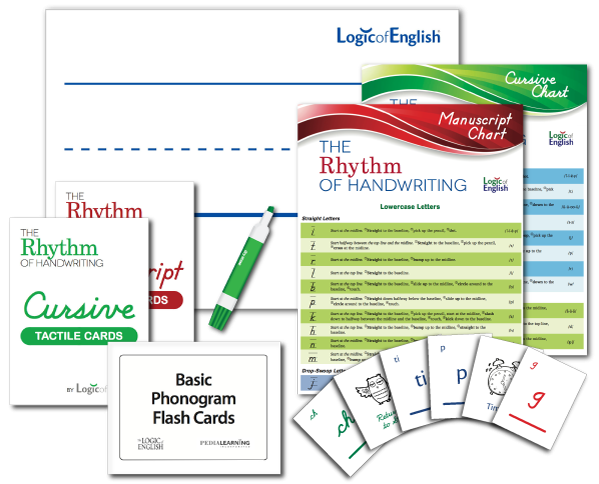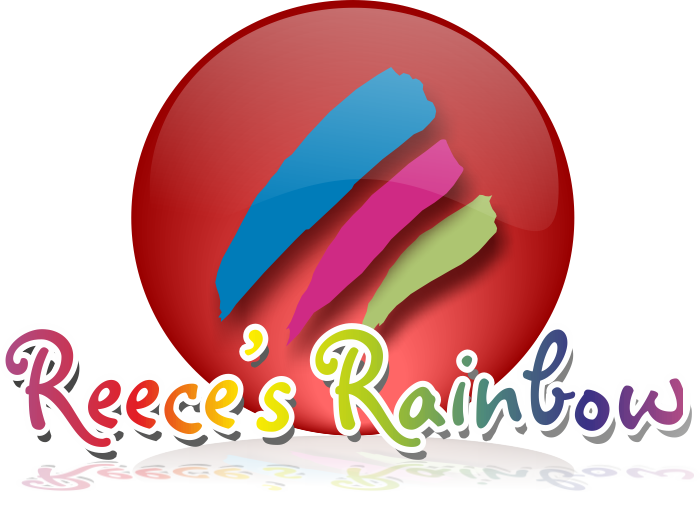
We got a chance to use Logic of English, more specifically, Foundations A We also got to incorporate some Rhythm of Handwriting - Cursive. More on the "cursive" part later.

The Foundations portion of Logic of English is designed for ages 4 to 7, and is a complete, phonics, reading handwriting and spelling program.
Per the Logic of English website, here is a snapshot of what the program is: The Logic of English is a systematic, multi-sensory approach to learning how to read, spell and write. The method is based upon 74 basic phonograms and 30 spelling rules that together explain 98% of English words.
Most weeks, V-girl had 3 or 4 days of school. I just love those eager little faces when they can't wait to start school! Hers did fade a bit as the weeks went on, but overall, she was still excited when it was a school day.
This program is organized so well for the teacher. The number one reason is that it came with a Teacher's Manual. Not all programs for younger kids have that. I am a huge fan of Teacher's Manuals (and I even read them!) The manual explains the whole thought process behind Foundations and explains what you will need. Each lesson starts by pointing out the objectives, what you will be working on that day and what materials you will need and what materials are optional for some of the extra/fun stuff you can do. ( One of the things they recommend is Dr. Seuss books....which we used to have lots and lots of and have one by one bitten the dust at our house. So, we just kept out eyes peeled for them at garage sales and we were good to go and have successfully replenished our supply.)
I usually didn't do a lot of before school "prep", I would just glance at the first page and see if I needed anything extra, but usually, I would just start and follow along in the Teacher's Manual as the lesson proceeded. It even tells you what to say to teach....not in a scripted format, so you are a robot, but examples to use to get the students to think and say the correct answer.
The lessons followed a basic pattern: Phonemic Awareness, Handwriting, Phonograms.....later in the lessons it also includes Words and Reading. There are even built in lesson reviews every 5 lessons, where you can assess (test) how well your student is mastering the skills.
There are little teaching boxes throughout the Teacher's Manual for things like:
Challenges: For example: Divide the whiteboard in half. Ask students to write vowels on one side and consonants on the other side.
Multi-Sensory Fun: For example: Provide students with alphabet cookie cutters and playdough. have the students make the target words with playdough letters.
Teacher Tips: For example: For students who struggle with writing, use letter tiles (like Scrabble letters) to practice spelling the target words.
Honestly, the little Teacher Tips were really helpful.
One of the other unexpected things that ended up being fantastic for our family were the Speech Tips. These were ways of teaching your student if a sound was a voiced or unvoiced sound, tongue placement, and lip placement....and looking into a mirror while saying them.
Speech Tips ended up being one thing useful for A-man, who is actually outside of the recommended age range for the course. He is 9 now, and at his recent well-check, failed his hearing exam and was sent to an audiologist for further testing.
Long story short, the audiologist (and I) diagnosed him with....."being a boy".
That is right. He passed all of her more detailed tests 100% and had perfect little arches on his charts where he was supposed to have them and could hear everything and all decibel levels. His air pressure in his ear was perfect too.
We discussed his easily distracted personality and the fact that during his initial hearing test at the doctor there were people in the hallway and that during the test, he kept saying, "I can't hear anything".....which we decided was the exact time when the little beeps were being played into his distracted ears.
Anyway, how does this relate to Foundations A and their speech tips? The audiologist was in another room looking at A-man through a little window during the tests. The room was set up with a microphone, so she could hear him repeat the words she was playing back to him. She noticed that he pronounced some words incorrectly and had exaggerated tongue placement for some words.
She talked about him seeing a speech therapist, but as she was talking and explaining things to me, a light bulb was going off in my head. "Hey, this is what those speech tips are all about....voiced/unvoiced and especially tongue and lip placement!" So, I said thank you as we laughed once again about the little distracted ears of 9 year old boys and went home and started doing a few pieces of the lessons with A-man.
He gets it. He certainly has a few bad habits to break. Especially over extending his tongue for certain sounds, but having him sit right in front of me watching what my lips and tongue do, and looking into a handheld mirror as he slows down and says the words, has improved his little speech quirks, without having to see a specialist. (My pocketbook thanks you Logic of English Foundations A!)
Back to V-girl, the "actual" student. Like I said, we usually did school 3 or 4 times a week. One of the things that ended up being awesome about how this was organized from a teacher perspective was that my bigger kids could help V-girl with school if I was tied up with someone or something else. As you can imagine with a household of six children, I get pulled in lots of directions and I will admit it, school for V-girl was sometimes way down on my list.
(Here they are working on sounds and where you "feel" them.....this one was in your nose.)
That is where L-girl especially, was able to step in and be super helpful. She just grabbed the teacher manual and went through the days lessons/activities with V-girl. It was great to watch from a leadership perspective for L-girl and from a student perspective for V-girl watching and imitating L-girl as she went through the sounds and tried cursive.
Speaking of cursive, let's talk about that for a bit, shall we?
Does starting with cursive for a 4 year old seem odd....and maybe just a lot crazy to you?
When I first heard it, I will admit that I thought it was crazy. Then I read their reasoning... "Why Teach Cursive First". I was intrigued by their six points:
- It is less fine-motor skill intensive.
- All the lowercase letters begin in the same place on the baseline.
- Spacing within and between words is controlled.
- By lifting the pencil between words, the beginning and ending of words is emphasized.
- It is difficult to reverse letters such as b’s and d’s.
- The muscle memory that is mastered first will last a lifetime.
I was intrigued, but I will admit I was skeptical....even though they say that cursive is less fine motor skill intensive than block printing.
I will say that V-girl can already recognize most of the block print letters, so even she was a little skeptical looking at and indentifying cursive letters. I would say we had mixed results with this. She loved writing on the whiteboard with her marker. She would get frustrated when her swoops and swing strokes didn't look like my example.....but she was able to do it, in the end.
(Just noticed she is writing her name in block print here....old habits died hard, I guess! Ooops!)
I am also a fan of workbooks and Logic of English Foundations has student workbooks where the work was quick, to the point, and provided ample opportunity to practice their new writing strokes and identifying phonograms.
(Quick little trivia from our family.....That Power Puff Girls t-shirt has been worn by all 6 of my children! D-man used to LOVE them!)
With this program, we got a few other things that I considered "bonus" items from their Reusable Resources set:
An actual student sized whiteboard with the dotted lines.....big on one side.....small on the other.

Doodling Dragons - An ABC Book of Sounds.

Phonogram game cards in both cursive and print.

Flashcards in both print and cursive. I honestly LOVED the tactile cursive cards because they had the added feature of having a sandpaper-y feel and showed strokes, numbers, and lower and upper case letters.


You can try Logic of English Foundations A, with actual physical books, or in a PDF format. The Teacher's Manual is $38.00, the student workbook is $18.00, and the Doodling Dragons ABC Book of Sounds for $15.00.
Take a look and see what other TOS Reviewers thought of some of the other Logic of English products they got to try.

























0 comments:
Post a Comment